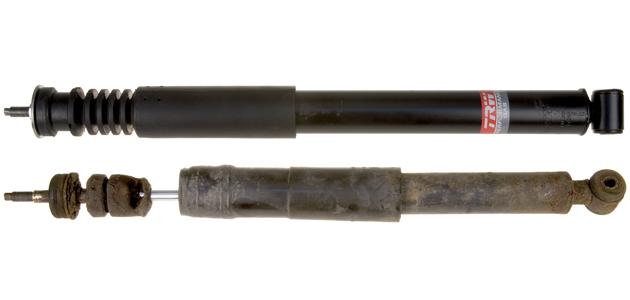Having a smooth, comfortable ride is taken for granted in modern vehicles. Whether there are bumpy roads or rough patches on the street, they don’t give the passengers any uncomfortable feeling. What if your favorite car suddenly goes all bumpy and shaky? Is there any way to increase ride comfort when the automobile starts behaving strangely?
Contents
How To Improve Ride Quality?
A great deal of technology is involved in improving the ride quality of a car. Several components work together to ensure that you have a bump-free ride. You should look into these parts and elements to detect the problems and increase ride comfort.
1. Replace the worn shock absorber
Shock absorbers absorb the force of the bumps and prevent the body of a vehicle from slamming up and down when the tires hit a rough patch or a pothole. They restrict motion and eliminate unnecessary swaying, making the passengers feel comfortable. Worn shock absorbers cannot resist the bounce of the wheel and the springs, causing annoying oscillation.

2. Avoid cheap tires
Cheap tires don’t have the correct, round shape that eventually sabotages the tire motion by damaging the shocks and struts. A damaged shock causes the tires to wear out and hinders their natural motion on the road. Similarly, cheap tires can be the culprits too as their uneven shapes actively take part in the destruction of shocks and struts.
Besides the tire quality, you also should consider maintaining the proper tire pressure recommended by the vehicle manufacturer. Underinflated or overinflated tires can lead to a harsher ride. Check the tire pressure regularly, including the spare tire.
See this video to understand how tires affect the ride quality:
3. Use the right type of tires
Tires come in various kinds and each category is suitable for only some specific applications. It means that using a truck tire to a pickup will result in a bone-shaking ride. For instance, if you replace the ten-ply tires of a half-ton pickup with six-ply tires designed for trucks, the ride quality will drop drastically. Remember that heavier tires need more air pressure because they are likely to carry more load capacity.
Read more:
4. Ensure the vehicle height is correct
The improper height of the vehicle changes the height of the suspension too, which eventually affects the ride quality. Height can be altered due to leaked air springs, damaged or failed air pumps, and broken springs. If you feel discomfort during a ride, you should also diagnose the air suspension along with other components.

5. Driving style
Drivers need to avoid driving fast or exceeding the allowed speed. On each route, there are specific regulations regarding speed limits when driving. The driver is not allowed to move the vehicle faster than this allowed speed.
When moving, the driver will need to brake, turn, or change lanes. These situations require calmness to change the vehicle’s control direction. Driving too quickly in these situations can easily cause the driver to not be able to react in time, causing insecurity for himself and others on the road.
6. Driving posture
Sitting in the correct posture when driving a car will make the driver comfortable and avoid many problems. In addition, it also helps the driver easily control when driving. With a correct driving posture, avoid causing back pain to the driver. The correct driving posture is the back of the seat parallel to the steering wheel column. However, you can adjust the oscillation between 95-110 degrees. To check if the seat tilt is up to standard, place your wrist at the highest point on the steering wheel. If you feel comfortable, while still maintaining a straight driving position with your back against the recliner, you are doing it right.
7. Utilize some aftermarket tools
You can use one or two aftermarket items to increase ride comfort. Installing adjustable dampers to an automobile that doubles the duty of a track car on the weekend will work great in absorbing shocks in different scenarios. Another effective way could be to equip the suspension with high-quality coil and dampers. These will yield improved road holding and better comfort.
8. Road conditions
Choose routes with smoother road surfaces whenever possible. Avoid roads with potholes, bumps, or excessive traffic congestion. Planning your journey to avoid rough roads can significantly improve the overall comfort of the ride.
Some other ways to increase ride comfort
Some other parts could also play a part in decreasing the ride quality. There are some rubber mounts in between the suspension parts and the body of the vehicle. When these mounts wear out, the passengers hear every noise from every single road bump. Similarly, the mount attaching the upper strut to the car’s body can also cause noise and vibration when worn out.
To wrap up, please remember that some factors may be specific to your vehicle’s make and model, so referring to your car’s owner’s manual for additional guidance on optimizing ride comfort is always a good idea.



